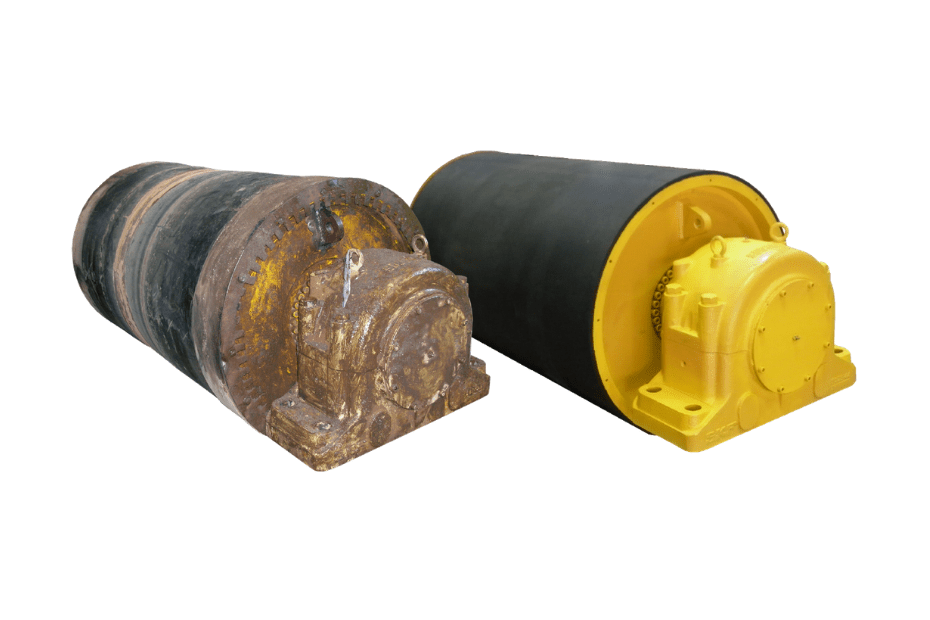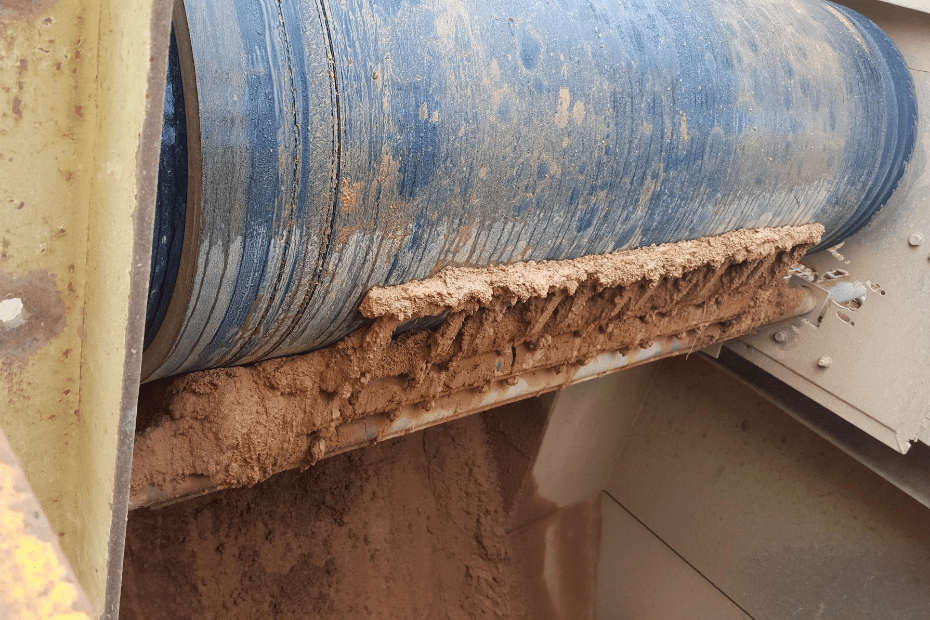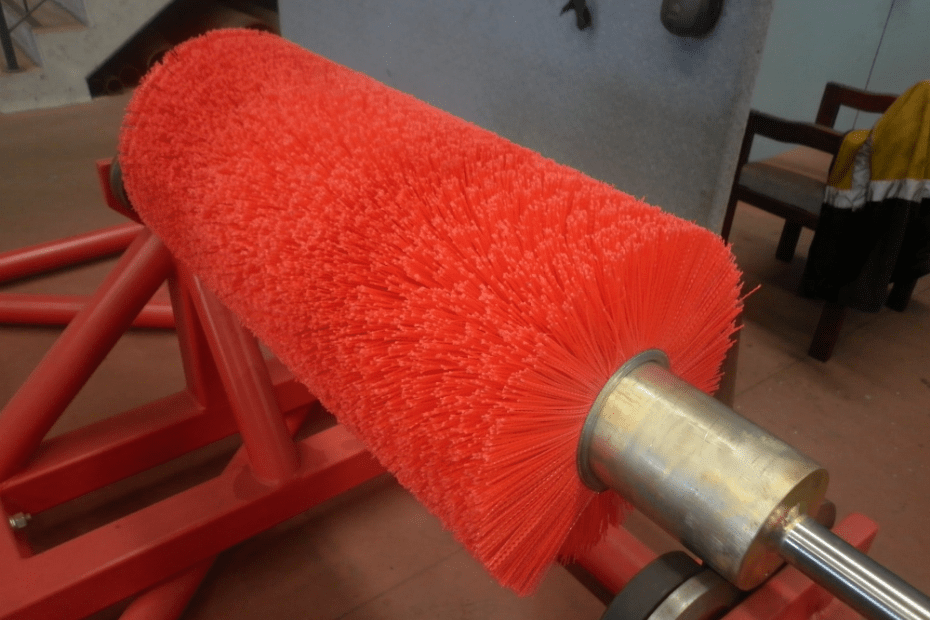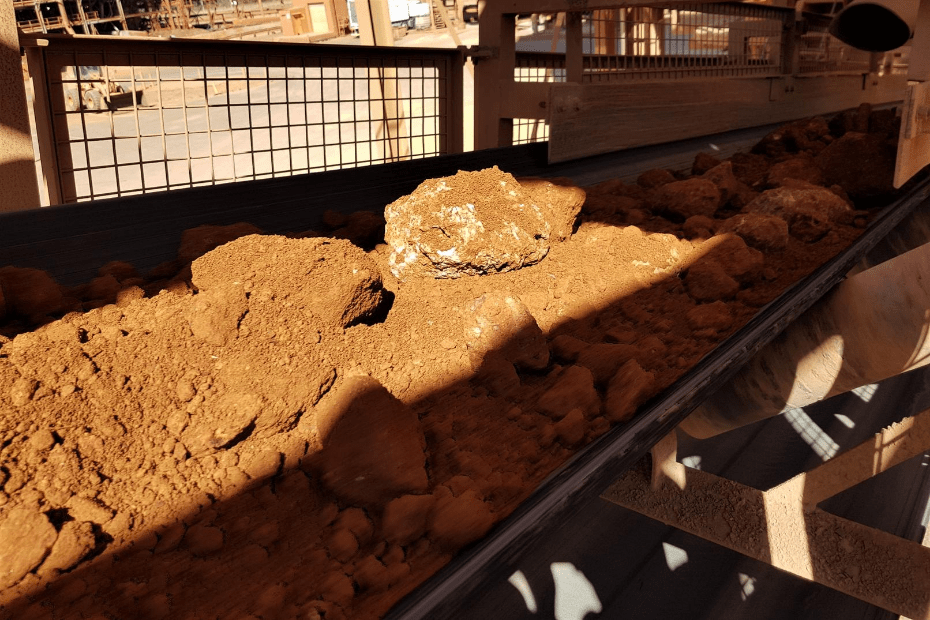
Common Causes of Conveyor Belt Damage
Conveyor belts are a viable component in a conveyor system. It is important to maintain them correctly and minimise any potential stoppages or damage to maintain the maximum up time and service life.
1. Abrasive Material
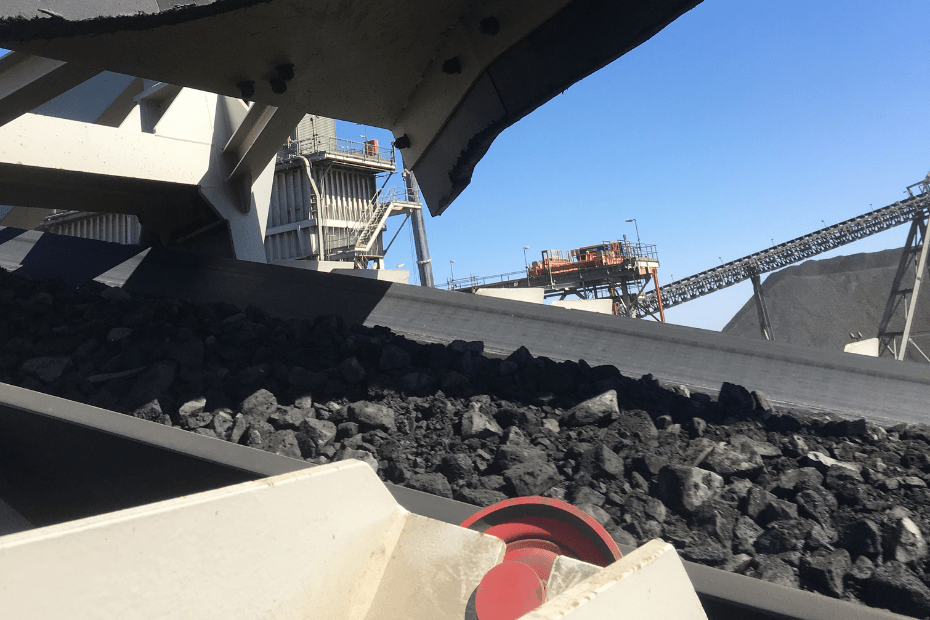

Materials being processed along the belt will over time wear out the belt surface. This is especially true for abrasive materials, such as iron ore, or where the conveyors are operating at high speed, high capacity and process rocky material.
These abrasive materials can also become misplaced in other areas, such as underneath or along the edges of the belt, causing preventable belt wear.
Suggested Solution: Correct Belt Type
Having the correct type of belting for the materials being carried can reduce the rate or risk of damage to the belt. For example, Grade A belts are Abrasion Resistant, therefore are longer lasting than General Purpose (Grade M&N) belts.
There are many different grades of textile/rubber belts, designed to suit different types of material. For more information on the different types of belt grades and what they’re suited for, visit our blog post: Rubber Conveyor Belt Grades and What They’re Used For.
Suggested Solution: Conveyor Skirting
Conveyor skirting is a system that creates an effective seal between the conveyor structure and the belt. Conveyor skirting prevents stray material from becoming lodged between the belt and conveyor structure, that can cause abrasive wear and grooving on the belt.
DYNA Engineering’s Flexiseal® Conveyor Skirting is a superior sealing solution that effectively prevents conveyor belt wear. Read about its key features and how it prevents belt wear here.
2. Carryback Build-up
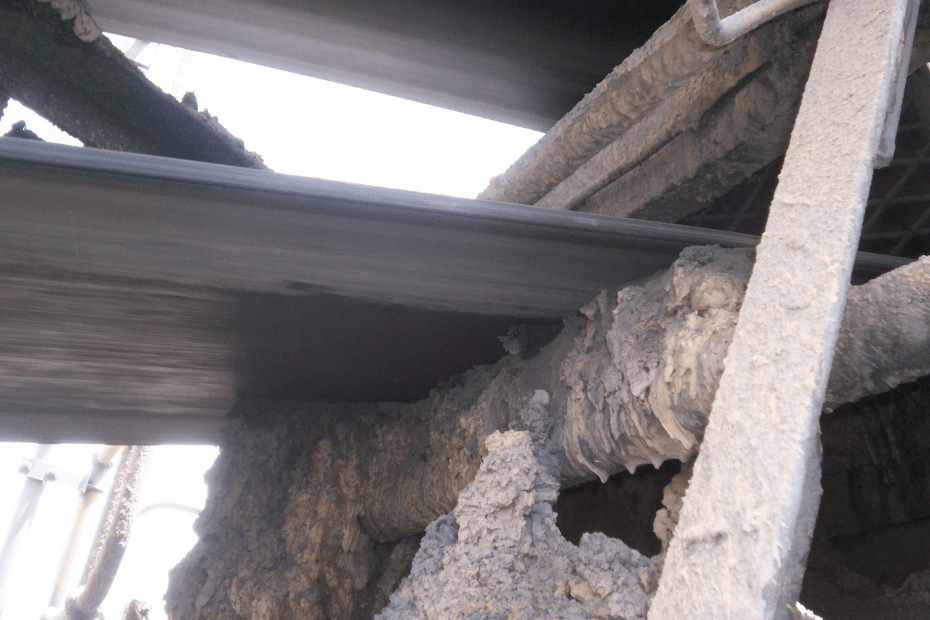

Material that remains adhered to the underside of the conveyor belt, even after offloading at the discharge point, is known as ‘carryback’.
Carryback can cause a range of problems for many conveyor components. In terms of belt damage, carryback reduces the efficiency and service life of the belt – especially if the layer of carryback thickens or hardens over time.
Furthermore, when carryback is stuck to other conveyor components, it can be consistently contacting the belt and effectively wearing the belt away.
Suggested Solution: Proper Conveyor Belt Cleaning Solutions
There are many different types of belt cleaning solutions on offer depending on a variety of factors. Essentially, their main purpose is to eliminate carryback on the belt; maintaining a clean belt free from potentially costly issues caused by carryback.
DYNA Engineering’s comprehensive range of belt cleaners can meet any belt cleaning requirement:
- Air Knives
- Belt Scrapers
- Brush Cleaners
- Spray Bars
- V-Plow
3. Material Impact Damage



Large and bulky material can cause damage to conveyor rollers, frames and belt. When the material lumps and become large or excessive, rollers become less effective.
When the lumps impact between the rollers, the belt is stretched to absorb the forces and causes stress. Over time, the impact can disfigure the belt.
The impact zone (where the material is dropped off the end of one conveyor onto another) is another area that is prone to extensive belt damage.
Suggested Solution: Impact Rollers and Idlers
Impact rollers and idlers are a decent solution to reduce the impact forces of materials, in turn reducing the rate of wear on your belt.
Impact rollers and idlers, compared to standard rollers/idlers, protect the belt from material impact damage by absorbing and transferring the impact forces.
Suggested Solution: Impact Beds
Impact beds are used in place of impact rollers and idlers. They are usually installed under the belt and the impact zones and absorb the impact forces from falling material.
Impact beds offer more support for the conveyor belt and closes the gaps left by impact rollers.
See more on impact beds here.
4. Belt Mistracking
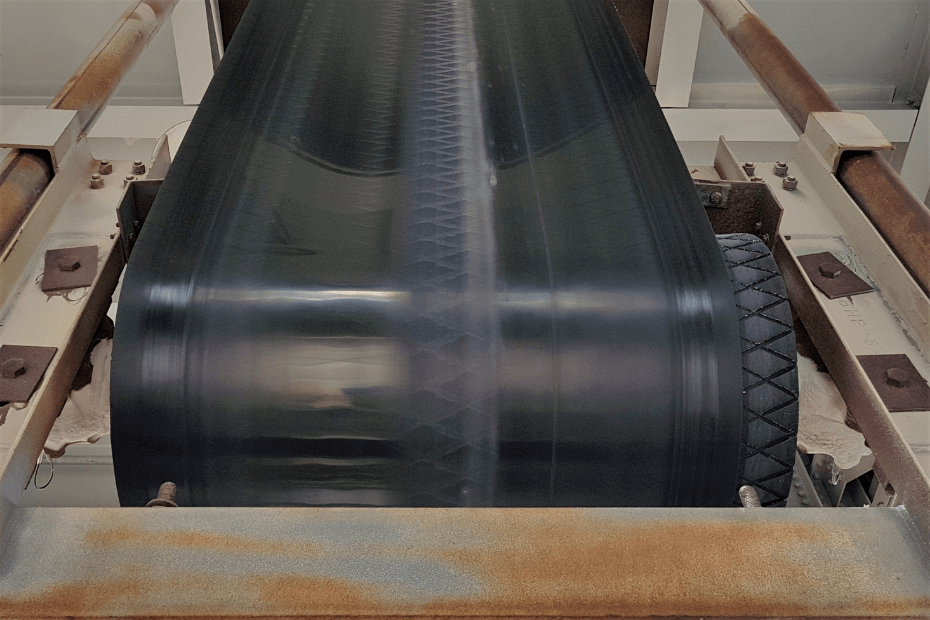

Belt mistracking is when the conveyor belt is no longer aligned in its original or recommended position on the conveyor structure. This causes the edge of the conveyor belt to rub against surrounding components and structure and become damaged.
It is a common issue that can be caused by a large range of factors, such as material build up (carryback), roller/idler condition, pulley lagging condition or type and even the condition of the belt itself. We discuss these factors in our blog post Common Causes of Belt Mistracking.
Suggested Solution: Tracking Rollers
DYNA Engineering’s DYNA-TRAC® tracking rollers performs consistent corrections to keep the belt running smoothly, aligned and centred. They are a low-cost and low-maintenance solution to belt mistracking and can be easily installed.
DYNA-TRAC® tracking rollers have many key features that aid in belt tracking. Read about them here.
5. Belt Cleaner
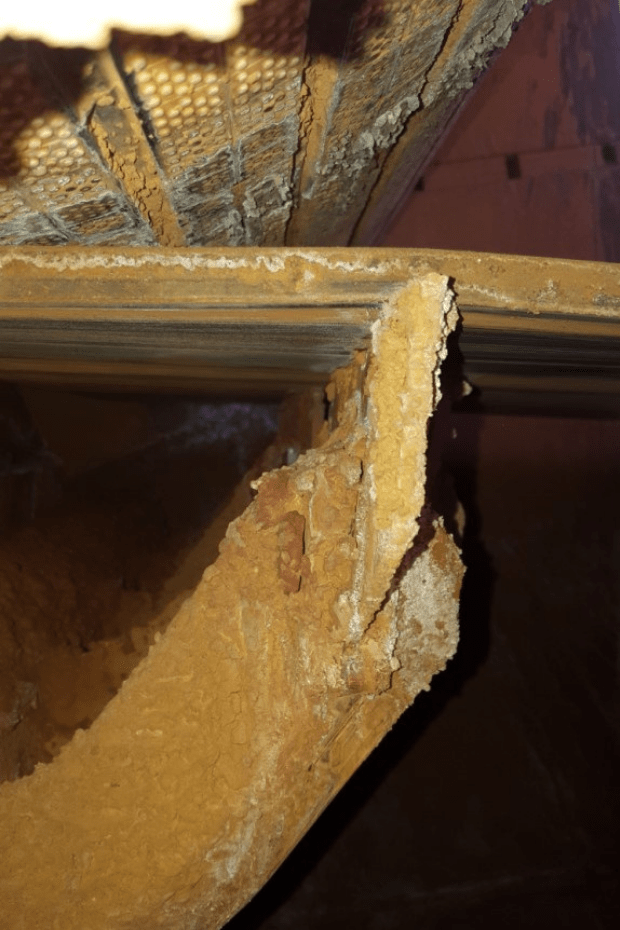

A belt cleaner system that is either not suitable for your application or improperly installed can become a source of damage to your conveyor belt. For example, belt scrapers are productive cleaners but a worn carbide-tipped blade can tear the belt.
Suggested Solution: Correct Blade Type on Scrapers
It is important that the correct type of scraper blade is used on your application, whether it be polyurethane or carbide, or something more exclusive.
Our blog post Polyurethane vs Carbide Belt Scraper Blades might help you determine if you have the correct blade type on your system.Suggested Solution: Ongoing Maintenance
Regular maintenance is the most effective way to prevent conveyor belt damage for any reason. Maintenance will identify any potential risks or problems, areas for improvement, and worn or failed components. This includes worn scraper blades that pose as a physical damage risk to the conveyor belt.
We analyse the reasons why regular maintenance is critical to ensuring peak performance and output for your system here: Why Regular Maintenance Is Important for Your Conveyor System.Related Blog Posts
Does Your Pulley Need Refurbishing?
Conveyor pulleys are a heavy-duty, consistently running piece of machinery that are essential components of a conveyor system. Although they are designed to last, after many years of constant use, conveyor pulleys…
Importance of Regular Maintenance
The importance of regular maintenance of a conveyor system can at times be overlooked. From small-scale operations to the most complex of systems processing hundreds of thousands of tons of material, ongoing and consistent…
Conveyor Brush Cleaners Explained
As the name suggests, a brush cleaner is a conveyor cleaning product designed to clean conveyor belts with a sizeable brush. Brush cleaners are usually connected to a gear box and motor which allows the brush cleaner to consistently rotate…
